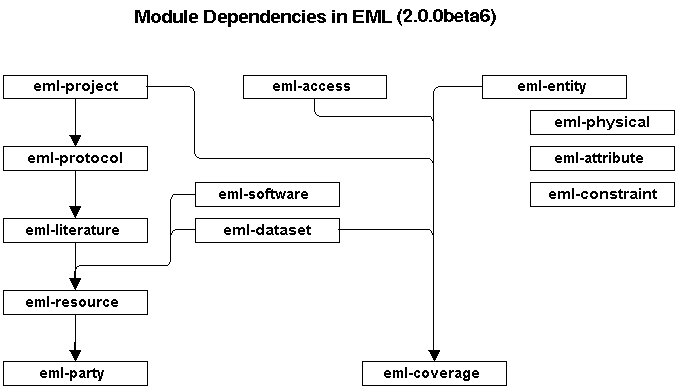
 |
Ecological Metadata Language (EML)
|
||||||
| KNB Home | Data | People | Informatics | Biocomplexity | Education | Software | |
EML Version @version@ |
|
Ecological Metadata Language (EML) is a metadata standard developed by the ecology discipline and for the ecology discipline. It is based on prior work done by the Ecological Society of America and associated efforts (Michener et al., 1997, Ecological Applications). EML is implemented as a series of XML document types that can by used in a modular and extensible manner to document ecological data. Each EML module is designed to describe one logical part of the total metadata that should be included with any ecological dataset. We are currently in the process of revising EML to create the version 2.0 standard described below. This is an ongoing process, and the current draft is being released for public comment and input on the revisions. The current draft is the result of a workshop held in April, 2001 in which a variety of information managers and gathered to review and revise EML. This draft represents the concensus that we were able to reach at that meeting, despite the fact that several contentious issues remain in the current draft. Please continue to use version 1.4.1 in production environments until we have finalized the version 2.0 release. Thanks. Send any comments, errors, or suggestions to "knb-software@nceas.ucsb.edu". Download EML The dowload consists of the 14 EML modules, described in the XML Schema language and in XML DTDs. In addition, full documentation on the modules is provided in HTML format. |
EML Version @version@ Modules |
|
Version @version@ (Proposed, In development) Version 2 starts with version 1.4.1 as a base and impoves on the design and content of each module based on testing and experience using metadata marked up in EML. Warning: this module is currently being developed and therefore it will change as its form is finalized by the KNB development group. We'll release a final version here when it is available. EML @version@ Documentation |
